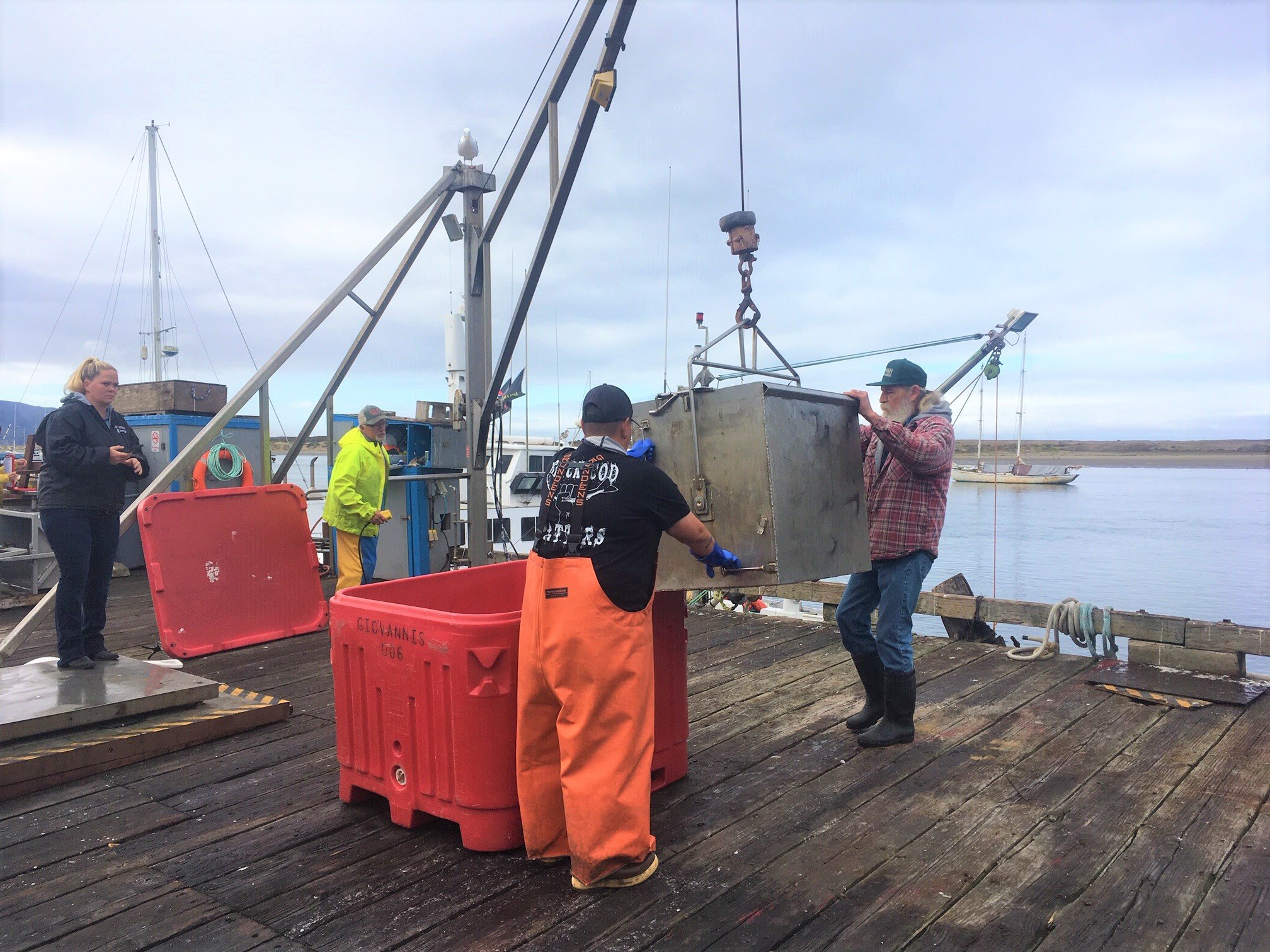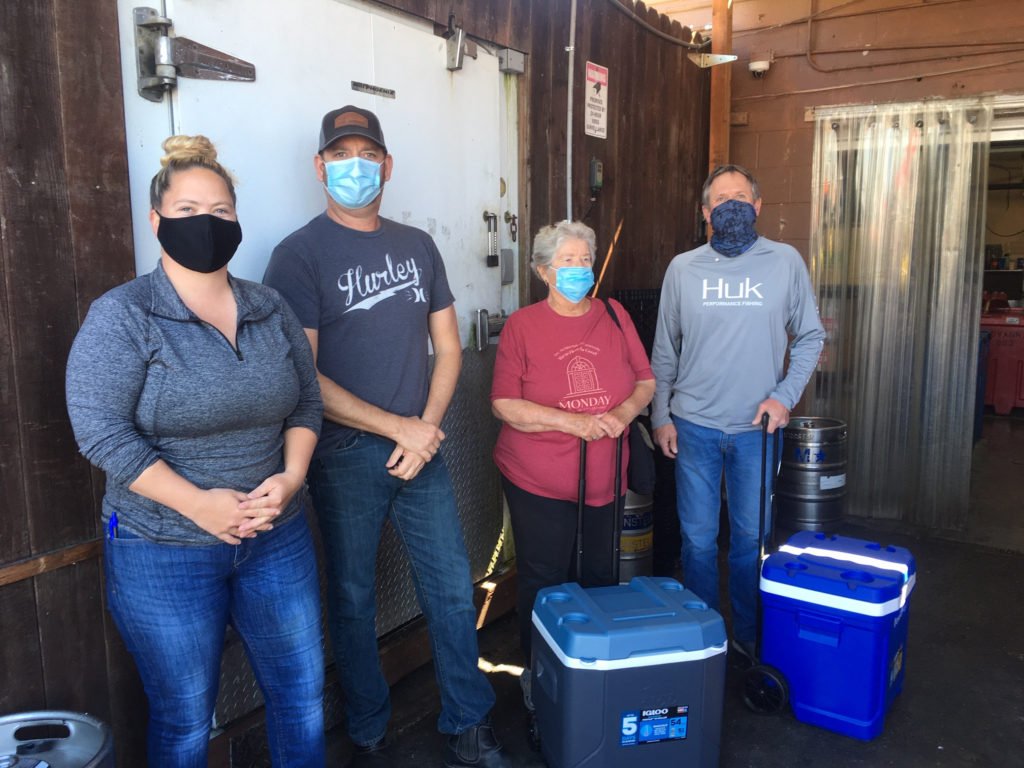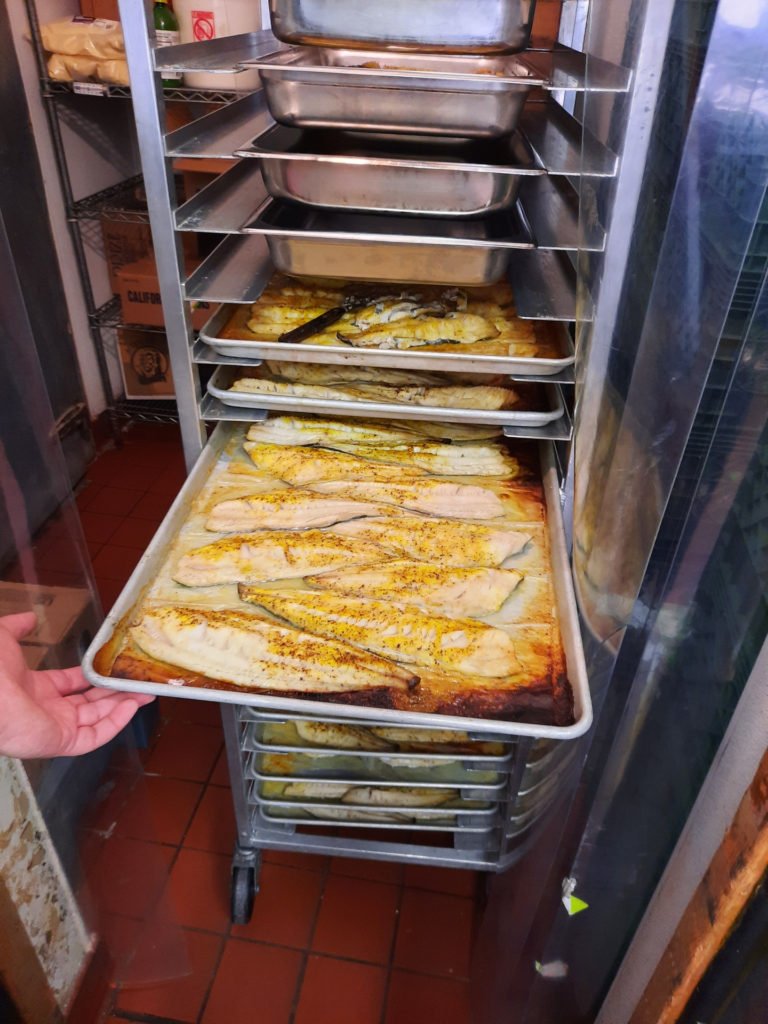
A Safety Net for SLO County Fishermen and the Food Insecure
Photos courtesy of Slow Money SLO
The pandemic sent waves through the economy and among the hardest hit sectors was Central California’s fishing industry. As restaurants shuttered and supply chains backed up, market demand collapsed.
Another impact of COVID-19 was the rising demand on food banks and similar organizations, a crisis that worsened with each passing day. This dilemma was illustrated starkly at the SLO Food Bank, which services those who are food insecure in San Luis Obispo County. Not only did the food bank experience increased pressure to supply their partner agencies, more and more people were coming directly to the Food Bank for help.
“In February of 2020, we had 14 households visit us in total, and in March of 2020 we had 117,” said Emily Hansen, SLO Food Bank’s Operations Director. “That was just the number of folks coming direct to us. That was significant to us because oftentimes, those coming straight to our warehouse are those who have never needed food assistance before or those who haven’t needed it in a long time.”
The difficult months dragged out to a year for both the fishing industry and for organizations providing safety nets for the community. Finally, a lifeline arrived in the spring of 2021.

Thanks to a grant secured and overseen by local non-profit Slow Money SLO, fishermen and women, fish workers, and the food insecure on the Central Coast received a much-needed boost beginning in March of this year. Over the next four months, through the end of June, over 10,000 lbs. of locally caught fish were purchased, processed and distributed to those in need.
The opportunity for this community collaboration came from Catch Together, a national non-profit project that seeks to financially support fishermen. The organization offered local food policy councils/coalitions the chance to apply for the grant, and the SLO County Food System Coalition was able to step up because of Slow Money SLO.
The San Luis Obispo organization was founded in 2012 by Jeff Wade as a chapter of Slow Money, a Colorado-based non-profit established to facilitate investment in local and organic farms. Jeff sits on the Coalition’s Steering Committee and offered the expertise and resources of Slow Money SLO to apply for and, ultimately, to execute the grant.
Getting the funding was well within Slow Money SLO’s wheelhouse. Processing and delivering fish … not so much.

“Thankfully, Giovanni’s (Fish Market & Galley in Morro Bay) was suggested as a processor by connections we had within the local fishing industry,” Jeff says. Members of the Morro Bay Rotary volunteered their time to deliver the fresh fish fillets to organizations such as ECHO, CAPSLO’s 40 Prado, and Meals that Connect.
Soon, the SLO Food Bank was added to the list of recipients as well. Because of the Food Bank’s refrigeration capacities, the grant program could expand into having Giovanni’s process frozen fish.
“We received our first donation of frozen fish in April (2021),” Emily says. As of July, “we have distributed close to 5,000 lbs. of fish through 46 agency partners, and still have around 1,000 lbs. left to distribute.”
Quantity of product was certainly a plus in such trying times, but so was quality. “We always put a lot of emphasis on providing our clients with nutritious food,” Emily explains. “We were so grateful to be able to do that with such a great product that was locally caught. It really meant a lot to us.”

For Giovanni’s owner, Gio DeGarimore, involvement was just another opportunity to help. “The primary reason for participating in the program wasn’t financial, although we were compensated for the labor to process the fish.” His fish market has been donating to food banks and shelters for several decades. “This program was a great way to both support the local fishing industry and at the same time give back to our locals in need,” he says.
Throughout the grant cycle, Slow Money SLO “made sure we were paying market prices for the fish and the processing,” Jeff explains. “We wanted to be sure we were helping the local industry in a way that did not disrupt their commerce. We just became an additional source of revenue, thus expanding the overall catch that could be caught and sold locally.”
That approach was a big benefit to local fishermen. “They were able to fish more often and sell their catch at market price – a previously simple task that proved to be very challenging during the pandemic,” Gio notes, adding that “our staff was able to keep working full-time, and they got a real sense of accomplishment from participating in this great program.”
As Gio so aptly describes it, “All around, this program was a win-win for everyone!”

